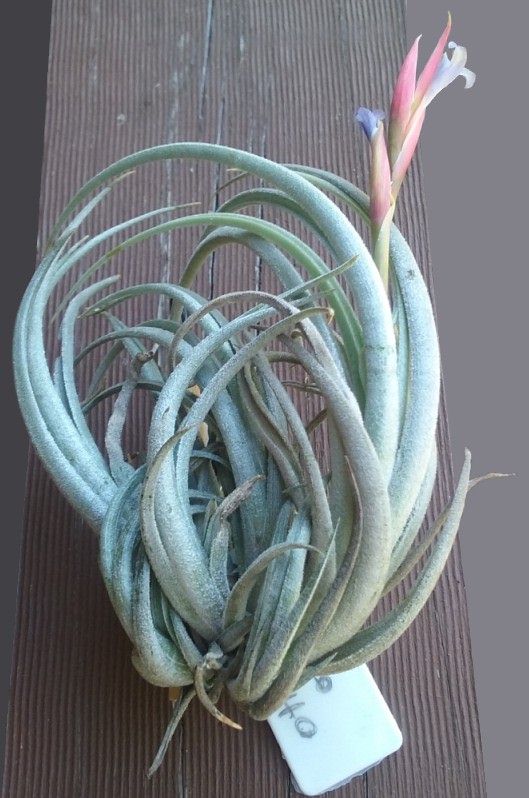
In 1993, in Bolivia, we camped on the southern side of the Rio Tumusla canyon, at high altitude.
Wandering around, I found T. lotteae and a blue flowering form of T. lorentziana.
Ewald Heger (the T. hegeri fellow, but really a cactus collector) used his binoculars to spot a number of tillandsias growing on the cliff on the opposite side of the river to which there was no vehicular access. He suggested I should strip to my underwear and swim across, seeing the others were after cacti. The river was brown with mud and contained ice, and so I declined. Also, the sight of me in underwear is frightening!
Anyway, Ewald made some scathing comments in German about pathetic Australian tillandsia collectors, stripped, and dived into the Rio Tumusla, which is one of the major swift-flowing rivers in Bolivia. We followed him on binoculars as he made it to the other side. He placed some plants in a bag and swam back. Scoffing in German, he gave me some plants which, thankfully, survived subsequent gassing and quarantine, an indication of the toughness of these high altitude Bolivian tillandsias.
I have spread some around.
If you examine Steve's great plants and picture, you might agree with me that it is most probably a new species. All of the plants have those significantly secund leaves and same spike. But I suspect nobody else could have reached these plants, other than Ewald.
Steve, I am more than chuffed to know it is flourishing elsewhere, at your place, but slightly embarrassed that I stayed dry at the habitat so long ago."